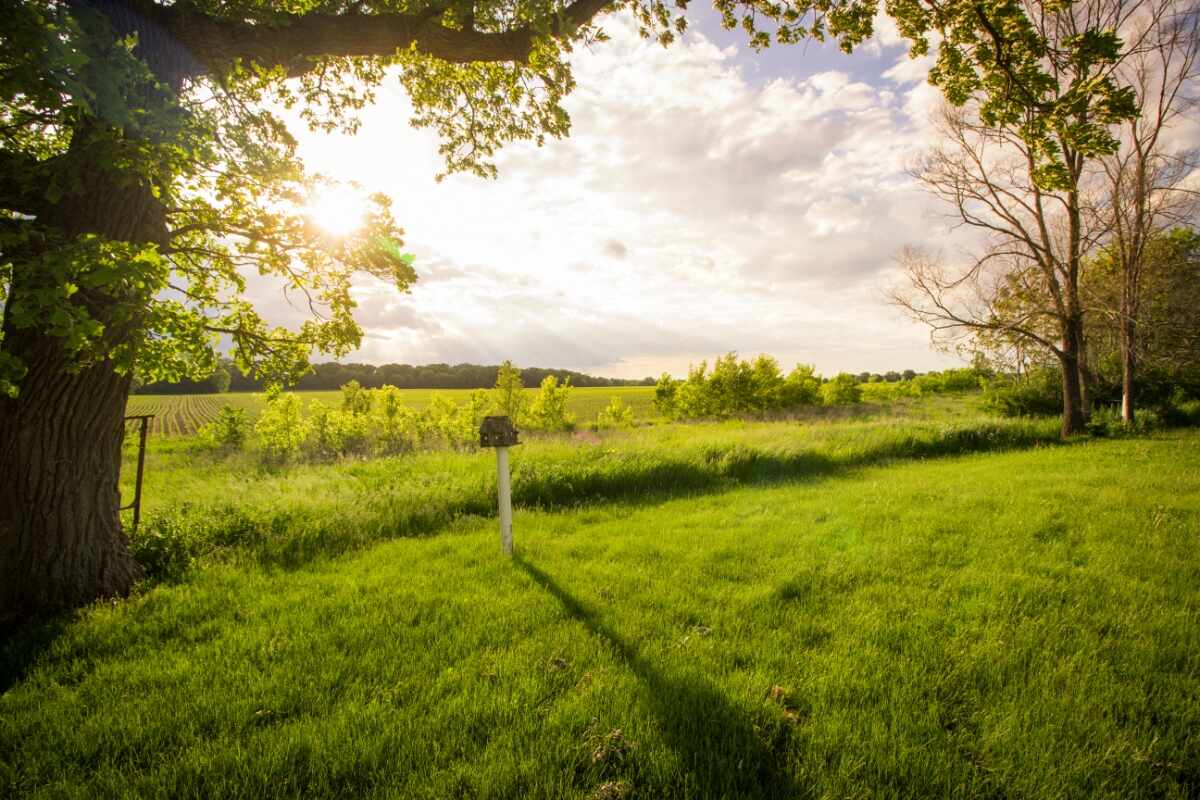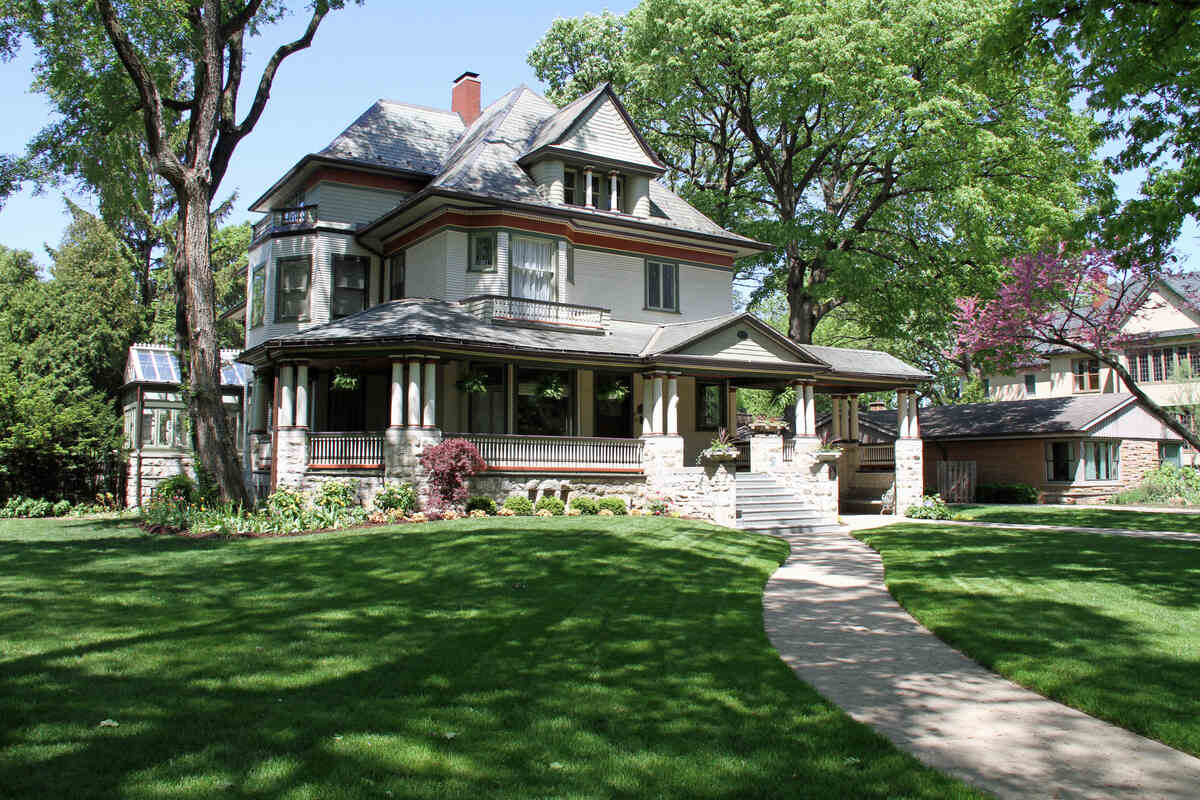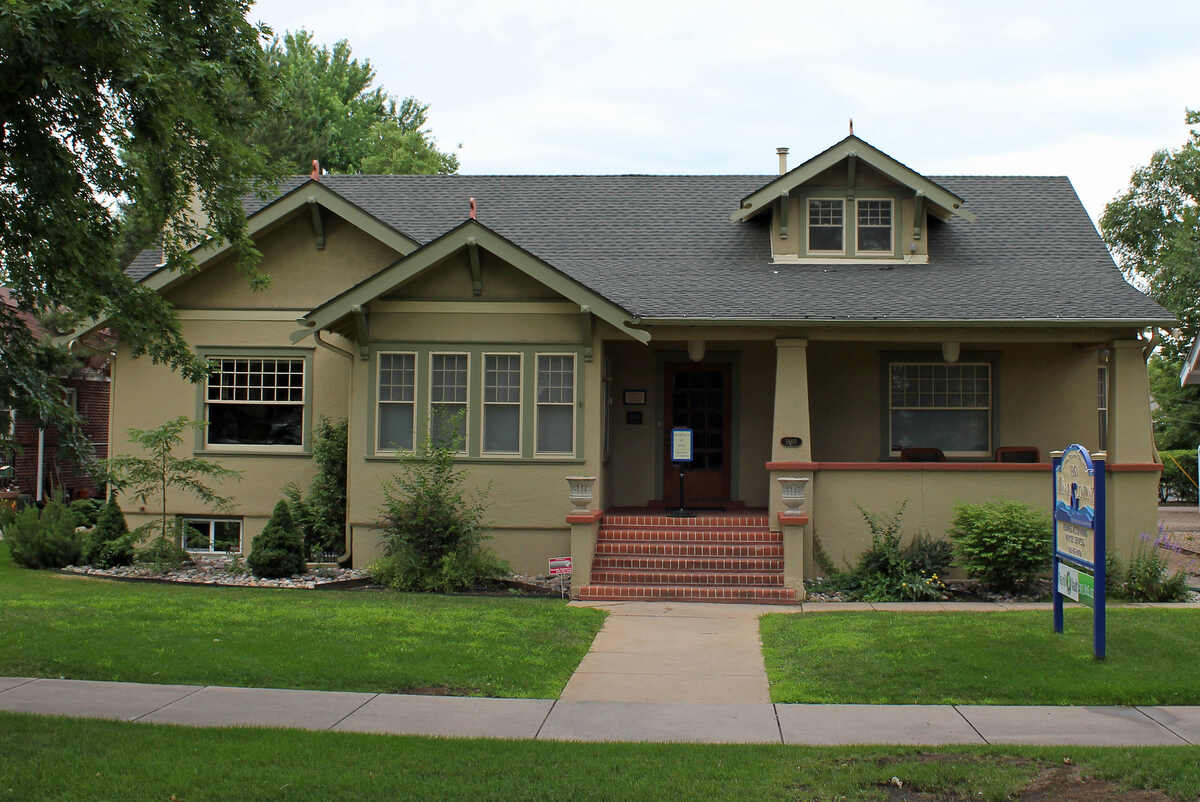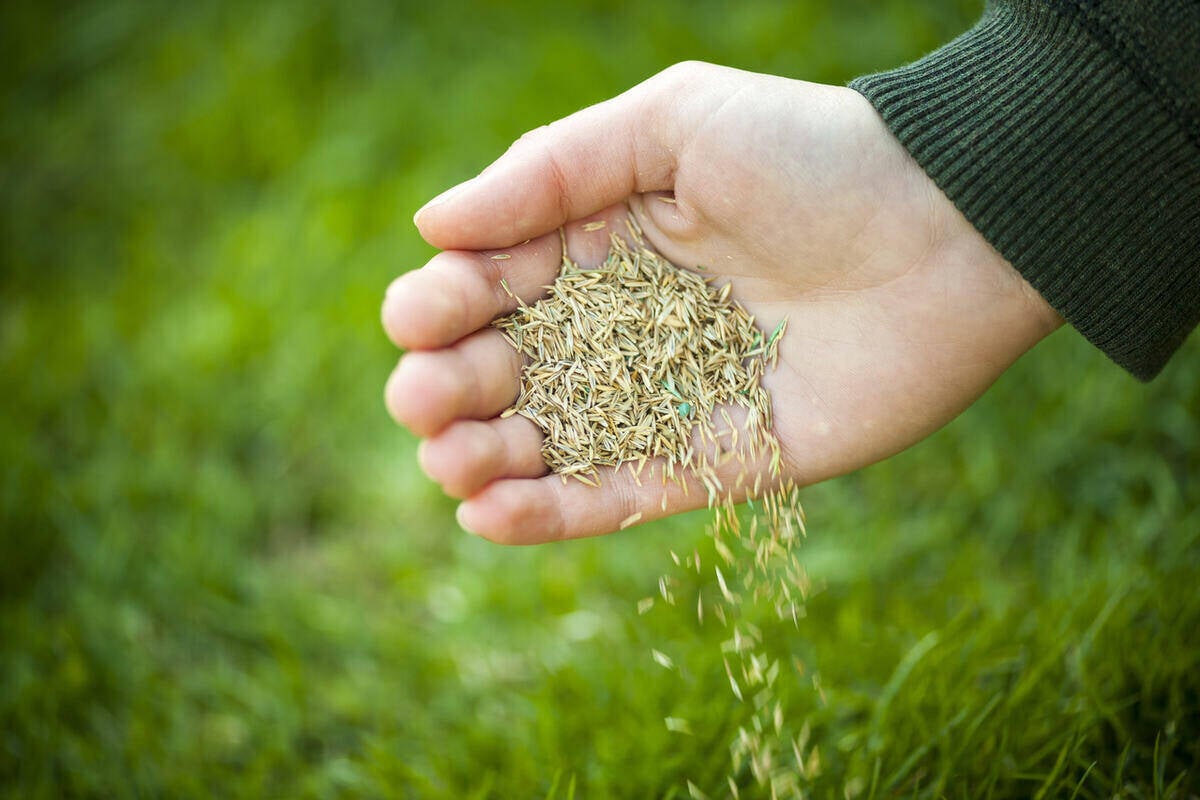
Summer left your cool-season lawn looking pretty rough. All that heat and all those hours spent enjoying it took a toll. And cooler temperatures on the horizon aren’t likely to do your lawn any favors. So, how do you help it recover and prepare it for the colder weather ahead? It’s simple once you find out how to overseed your lawn in the fall with fescue.
Why Overseed in the Fall with Fescue?
When you overseed a lawn, you spread new, fresh grass seed over an already existing lawn in order to cover up any bare spots and enhance the thickness of the grass.
“It’s a rejuvenation of the lawn,” says Tom Good, Horticulture Assistant with the Kansas State University Extension office in Johnson County.
You do it, he says, after those long, hot, dry summers have wreaked havoc on your grass. Adding the fescue, which grows its best in the cool temperatures of fall and spring, breathes new life into that tired lawn.
Why won’t fescue repair itself? Tall and fine fescues are bunch-type grasses, which don’t have runners to produce new plants as warm-season grasses do. Bunch-type grasses must be overseeded to repair bare patches, and the best time for overseeding fescue is in the fall.
How to Overseed in the Fall With Fescue
1. Make a Plan
Get your soil tested: The first step is knowing what you’re starting with. Based on the results of the soil test, apply fertilizer, lime, or other soil amendments. That should be sufficient for six to eight weeks.
Choose the right type of seed: After the soil is ready, it’s time to choose the right type of seed. Seed choice is paramount. This is a good time to check with your local Extension agent and see which fescue cultivars are likely to thrive in your home lawn.
Act during the right time of year: Late summer and early fall bring cooler temperatures and the most favorable conditions for cool-season grasses such as fescues. This is the opposite of warm-season grasses, like St. Augustine or Bermudagrass, which have their peak growth during the warmer temperatures of summer.
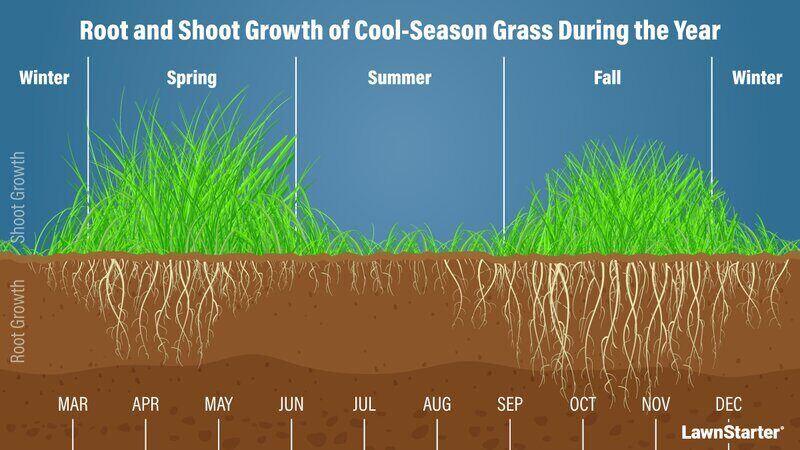
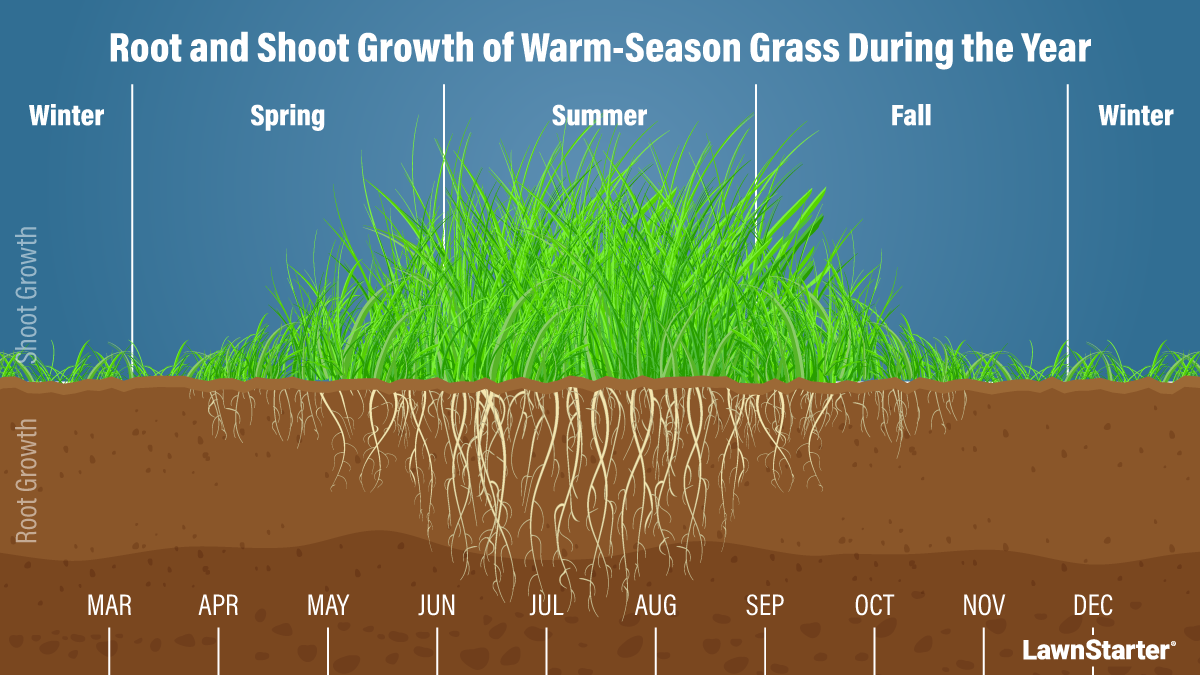
If you are in the transition zone: What grows best depends on your climate, but a large swath of the country is in the transition zone, where the weather doesn’t particularly suit either type. In the transition zone, home lawns tend to rely on cool-season grasses such as Kentucky bluegrass, ryegrass, or a mixture.
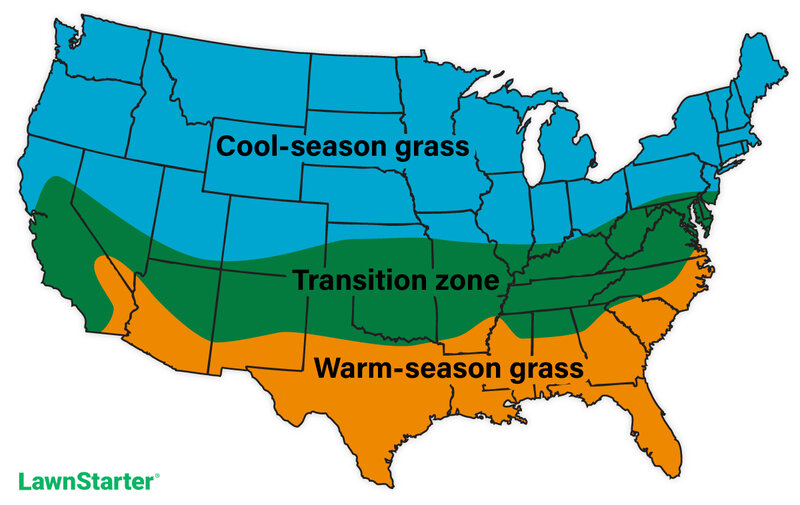
In the Midwest, overseeding is extremely common, Good says. Right along the line between cool-season grasses and warm-season grasses, Kansas likely sees more lawn renovation in the fall than anywhere in the country, he says.
“It’s on the hotline,” he says. “It’s a question we get all the time.”
Know your fescues: Fescue grass grows best in well-drained soils at air temperatures between 60 and 75 degrees Fahrenheit, and comes in a number of different species:
- Tall fescue is adapted to a wide range of soil and climatic conditions. It has a medium to coarse texture and tolerates higher temperatures, drought, and wear. It’s good for full sun or lightly shaded areas.
- Fine fescue is an umbrella term for other strains, like chewings, hard, and red fescues. They get their name from their narrower leaf blades. Fine fescues do well in the shade and drought, but not warm temperatures.
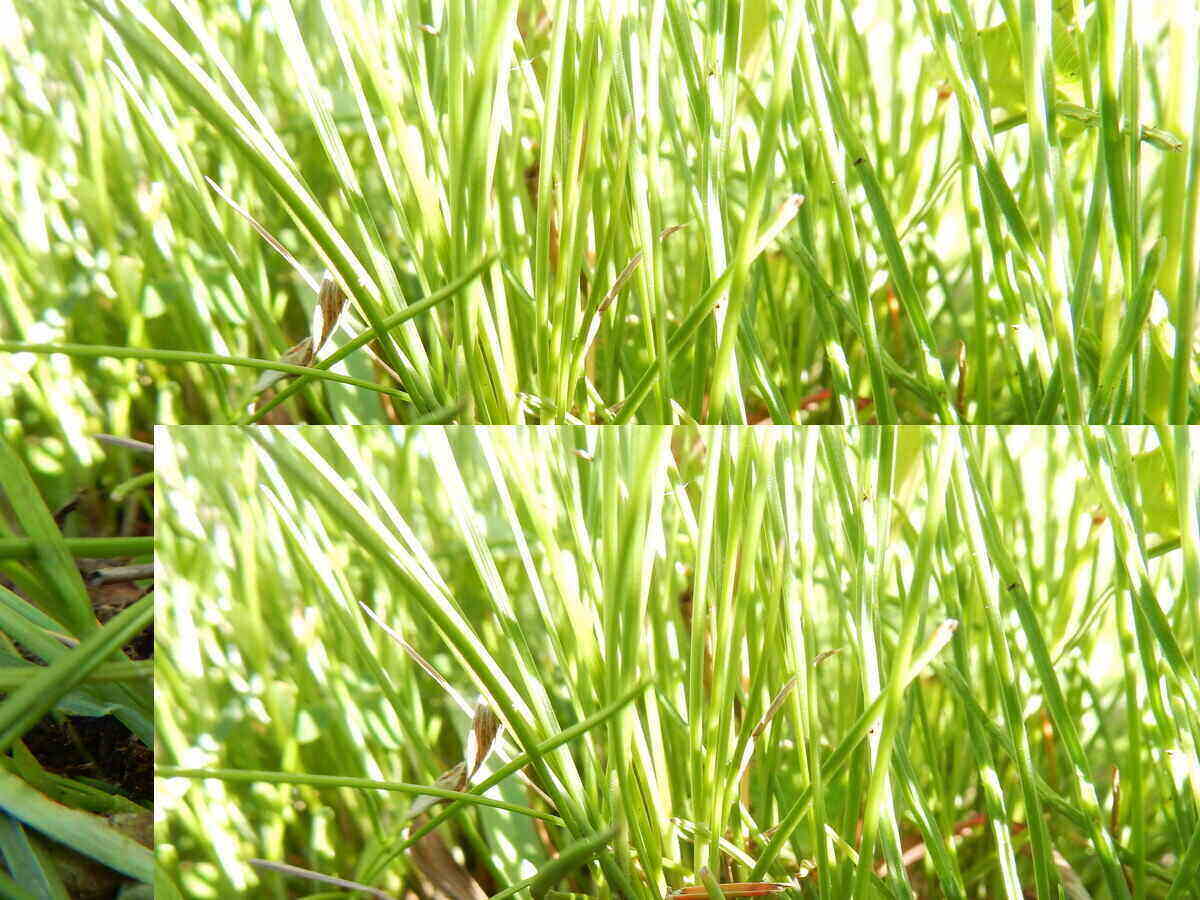
Photo Credit: Matt Lavin / Flickr / CC BY 2.0
Note: If you have thin areas or bare patches on your lawn, using Kentucky 31 tall fescue for overseeding can be a good choice if you already have a K-31 lawn. Stay away from this older cultivar if your lawn is seeded with a newer tall fescue cultivar. K-31 typically germinates best when the soil temperatures are between 50 F and 65 F.
2. Choose High-Quality Seed
Not using high-quality seed is one of the top mistakes Good sees when homeowners overseed in the fall. “It costs more, but believe me, you’re going to like the results a lot more,” he says.
For fescue blends in particular, he says to look at the weed or crop percentage in the seed. You want it to be zero. “People will go with cheap seed and they have all these weeds come up,” Good says.
All the information you need to select the right grass is on the seed bag:
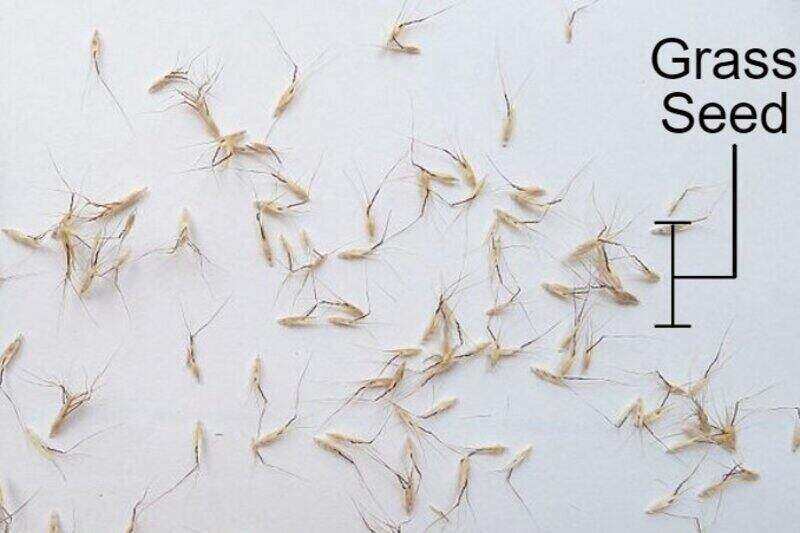
- Names of grass cultivars: These should be listed on the seed bag label. Make sure they’re right for your lawn and climate.
- Germination percentage: Higher rates mean more seeds successfully take root and grow. For tall fescue seed, you need at least 85 percent, and it should be slightly higher for fine fescues.
- Percentage of weed seeds: Choose very low weed seed levels, ideally less than 0.25 percent. You want to plant grass, not weeds.
- Sell-by date: Fresher seed mixtures usually have higher germination rates. Choose seeds packaged for this year or next.
Now that you’ve invested in quality fescue seed, you’re ready to start prepping the site.
3. Prep the Overseeding Site
Mow the existing lawn short. Cut it to about 1.5 inches before overseeding, so the new seedlings can compete with the existing grass and weeds.
A short cut also helps sunlight reach new seedlings and prevents seeds from getting stuck in the vegetation. Unlike most occasions, when mulching grass clippings is good for your lawn, bag the clippings for this mow so they don’t interfere.
Thatch impedes growth from new seed. It is important to have less than a quarter-inch of thatch when overseeding. Seeds that get hung up in thatch might not establish properly.
If you have a thicker layer of thatch than that, use a tool such as a verticutter, power rake, or aerator to dethatch your lawn. Good recommends a verticutter, which cuts vertical slits into the soil. “One of the most important things, when you’re overseeding a lawn, is getting soil contact with the seed,” he says.
Power raking also removes thatch, and is something to consider when thatch passes the half-inch mark. But be warned: Power raking pulls up a lot of material that will have to be gathered and discarded.
An aerator is better for lesser thatch, say under a half-inch, and reducing soil compaction in heavy soils. Aerators remove small cores of soil, improving water, nutrient, and oxygen movement into the ground.
Adding topsoil could help. Some homeowners apply topsoil when overseeding. It provides some germination. But “using existing soil and verticutting is a much better method,” Good says.
4. When the Time is Right, Apply Starter Fertilizer
You want to wait until the soil temperature falls to 50 degrees to 65 degrees Fahrenheit to get the best germination from your fescue seeds. That generally equates to days when air temperature consistently hits 60 to 75 degrees.
At that point, apply starter fertilizer. It is the only product other than seeds needed for seeding a lawn.
Don’t be wary about fertilizing at seeding, because those young seedlings will need the added push to quickly start germinating and establishing turf. The existing grass will get a boost, too.
5. Plant Your Seeds
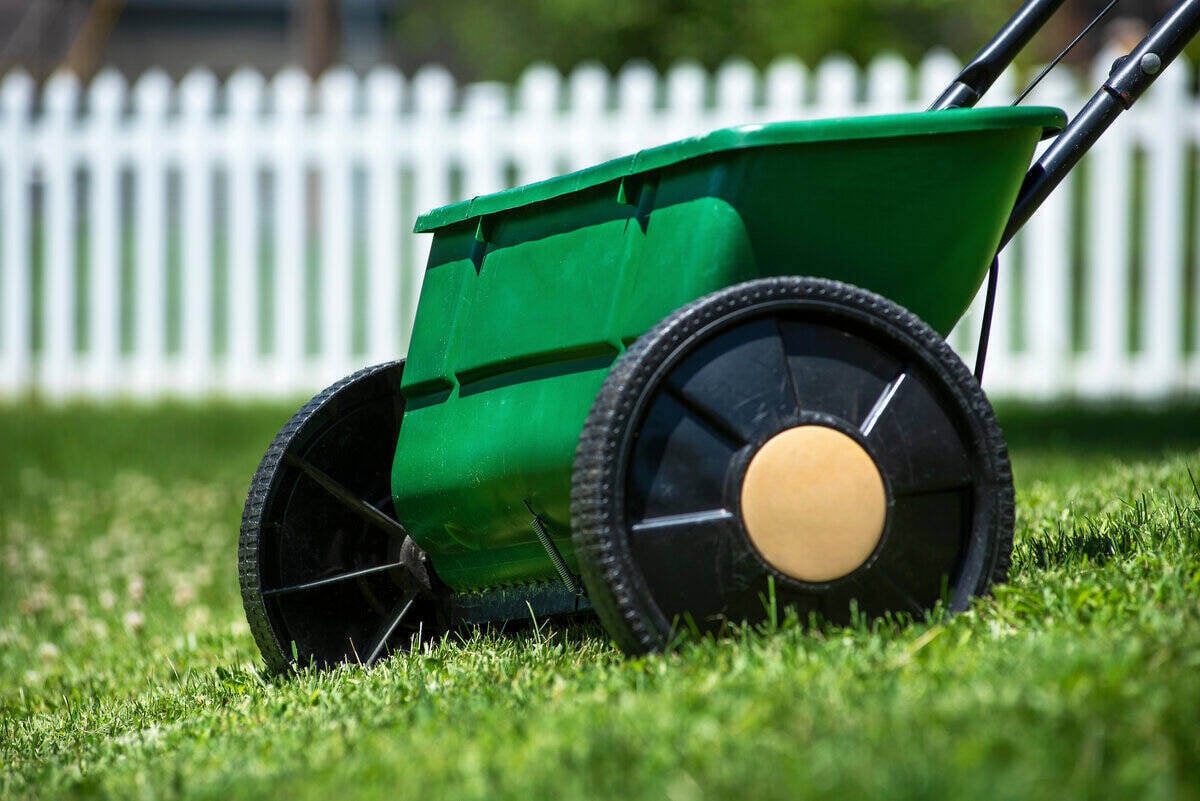
Your yard is ready for overseeding when:
- The lawn is mowed and dethatched.
- The fertilizer is in place.
- The seedbed is moist.
- The temperature is right.
- The perfect seed blend is in hand.
Use a drop-type grass seeder rather than applying by hand or using a rotary spreader. (These are better suited for fertilizer.) Be sure your spreader is set to apply the correct amount of seed.
Be sure to use the right amount of seed. Knowing just how much seed to overseed is your key to success.
Overseeding requires about half the normal seeding rate. For overseeding tall fescue on bare soil, experts put that rate at 6 to 8 pounds of seed per 1,000 square feet (something that can be double-checked; it should be listed on the bag). Cut that in half for overseeding, and you get 3 to 4 pounds per 1,000 square feet.
Water regularly to keep the seedbed moist and ensure rapid germination. Failing to keep the seedbed moist is a common mistake when overseeding. “People either water too much, which smothers the seed, or they don’t water enough, so it doesn’t come out,” Good says.
Begin with frequent, light irrigation and progress to deeper, more infrequent watering as the seedlings and their root system become established.
Mulch might help. Spreading a light mulch of hay will retain soil moisture and keep seedlings from drying out. The recommended rate is one bale of hay per 1,000 square feet, but be careful. Too much mulch cover will smother the seedlings.
6. Care for the Young Grass
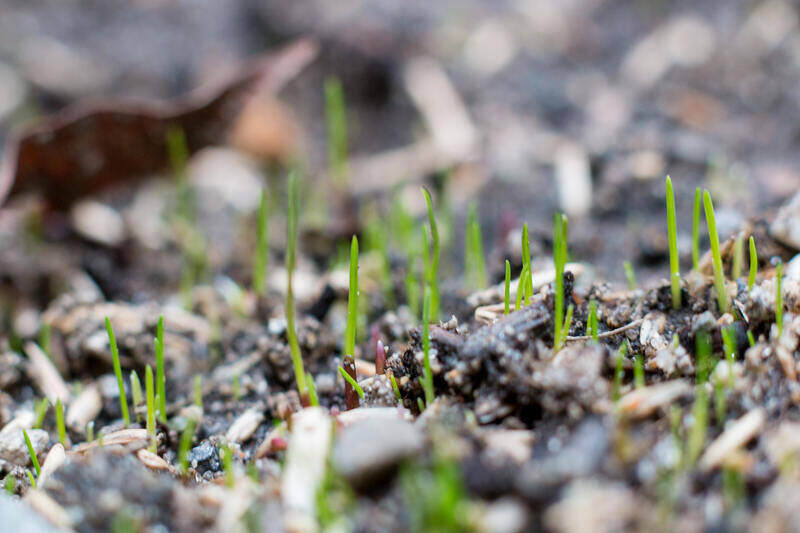
Once that new fescue lawn comes up, you’ve got to keep it up. And it’s going to take some special lawn care practices.
Prepare to nurse your new lawn for at least two months.
- Keep foot traffic off young seedlings for at least a month; they are easily injured.
- Pull weeds by hand. All that tilling, fertilizing and watering that goes along with establishing new grass from seed also helps establish weeds.
- The control of weeds, such as crabgrass, can be a challenge, too, but broadleaf herbicides should not be applied until the lawn has been mowed three times.
7. Mow the Right Way
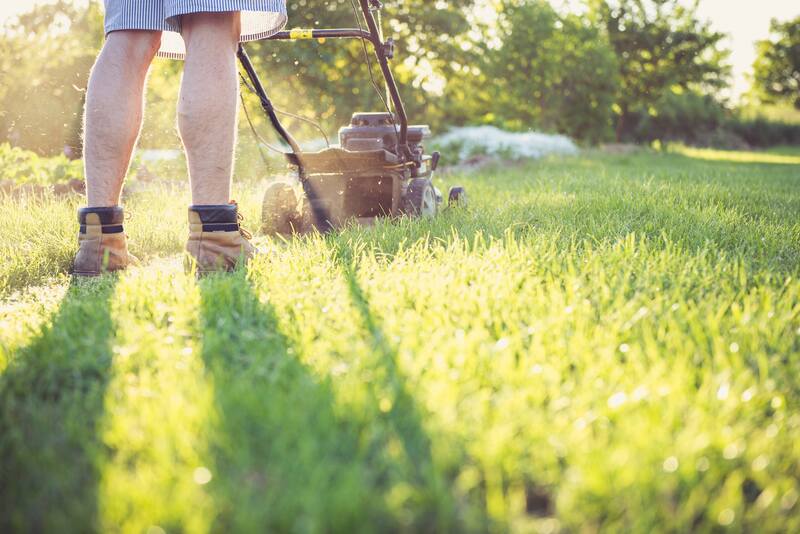
It may be scary to mow a young lawn, but it is a vital part of the establishment. Proper mowing height is crucial. Sufficient grass height allows the turf to mature before winter sets in and minimizes encroachment from weeds.
Let fescue reach 4.5 inches, then mow it back to 3 inches. Allow those clippings to fall into the turf, where they’ll return nutrients to the soil. That alone can reduce the need for fertilizer by as much as 30 percent.
Once you’ve mowed that fall season lawn a few times, the next step is celebrating. You’ve got a newly rejuvenated tall fescue lawn that will tolerate cooler temperatures and stay thick and green longer.
FAQs
When in the Fall Should I Overseed?
Look up your region’s first frost date of fall, then plant 45 days before. This allows a one- to three-week germination period plus time for roots to become established before winter. Knowing when to overseed fescue is half the battle, so if you have the timing right, you’re on the way to a healthy, rejuvenated lawn.
Can you Overseed Fescue Without Aerating?
It is not a must that you aerate before overseeding fescue, but it will improve growth rates and make it grow thicker faster.
Can you Just Sprinkle Grass Seed on the Lawn?
Yes, you can sprinkle grass seed on the lawn, but you can expect to have less contact between the seed and soil, leading to a lower germination rate.
How Often to Overseed?
In most places, some form of overseeding along with aeration should be considered something to do every year.
Call In The Pros
You don’t have to wait to take care of your lawn. Overseeding is a simple DIY process that can address needs before they become expensive problems.
Remember, overseeding will:
- Rejuvenate thin or bare spots
- Fight weeds
- Reinvigorate lawns
- Touch-up areas worn out from constant mowing
- Enhance the color of your lawn and make your green even greener
- Strengthen the entire lawn without needing to start over
If you’d rather have someone else do the fall overseeding for you, contact one of our local lawn care professionals. They’ll do it all: mow, dethatch, fertilize, and even figure out how much grass seed for overseeding your lawn is necessary. You’ll have a stronger cool-season lawn in no time.
Additional sources:
LawnStarter participates in the Amazon Services LLC Associates Program, an affiliate advertising program. LawnStarter may earn revenue from products promoted in this article.
Main Image Credit: Elena Elisseeva / Shutterstock

